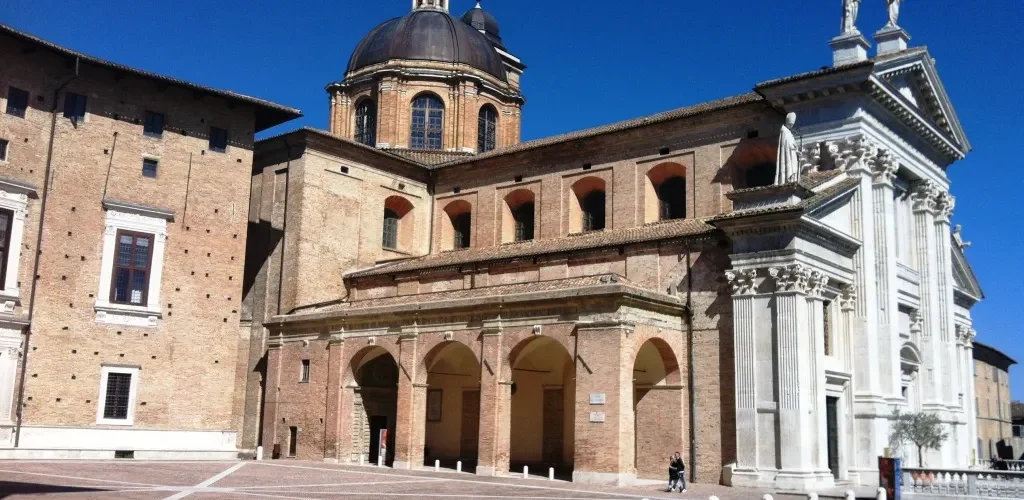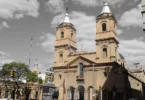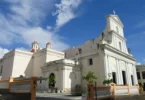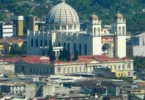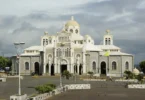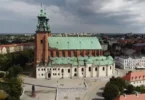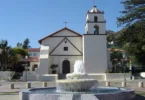Introduction
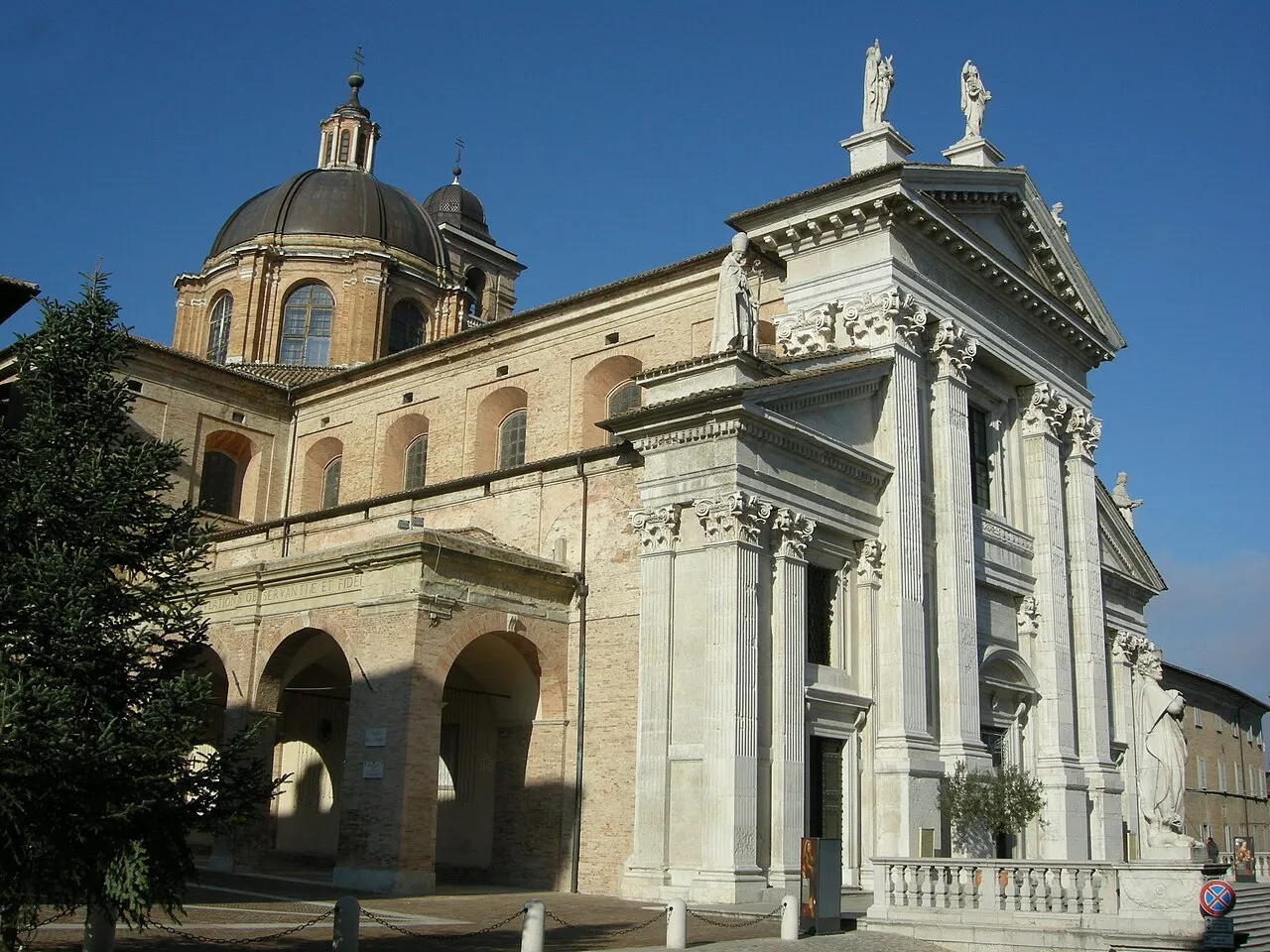
The Cathedral of Santa Maria Assunta, also known as Urbino Cathedral or Duomo di Urbino, is the principal Catholic place of worship in the city of Urbino, Italy. Dedicated to the Assumption of the Blessed Virgin Mary, this cathedral serves as the seat of the Archbishop of Urbino-Urbania-Sant’Angelo in Vado. Historically, it was the residence of the Archbishops of Urbino before the creation of the current archdiocese. The cathedral, originally built in the Renaissance period, underwent significant reconstruction following the damage caused by the devastating earthquake of 1789. While it retains the dimensions of the earlier structure, much of it was rebuilt in the Neoclassical style. The cathedral’s size is impressive, measuring 64.5 meters in length, 36.8 meters in width, and 50 meters in height. In recognition of its historical and religious significance, Pope Pius XII elevated the cathedral to the status of a minor basilica in November 1950. Today, it remains a prominent architectural and spiritual landmark in the city of Urbino.
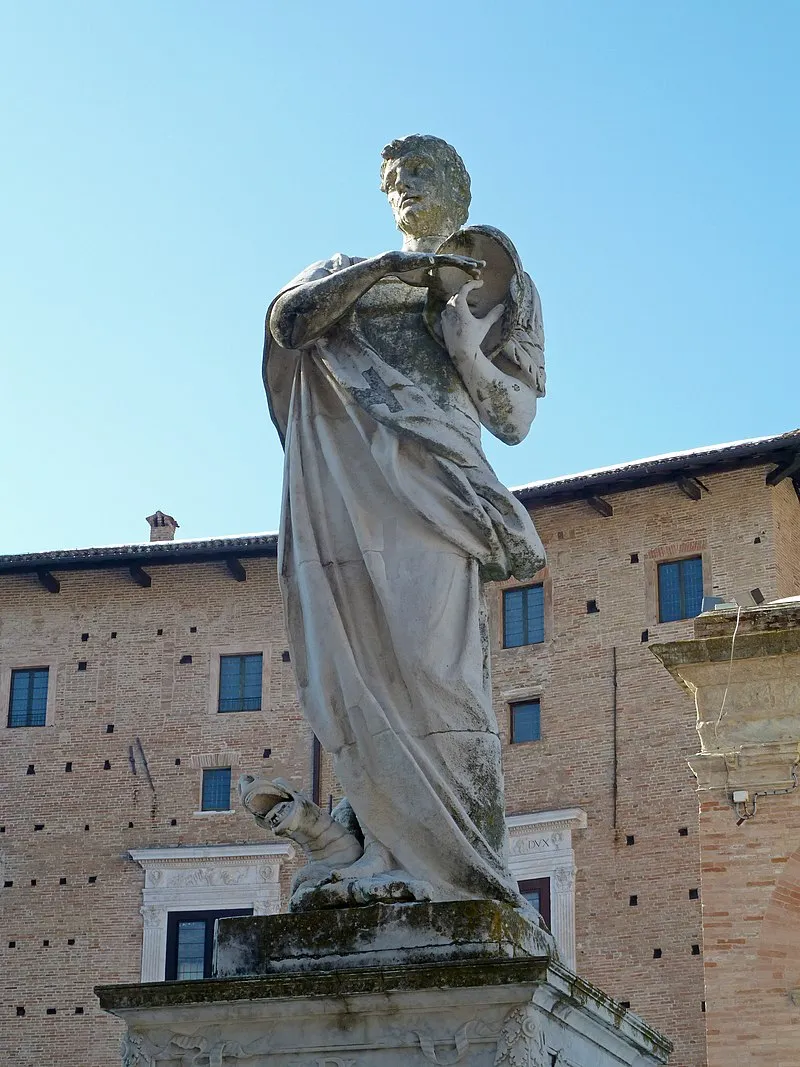
The Urbino Cathedral, originally founded in 1021, stands on the site of the earlier Santa Maria del Castello church. The original church, located outside the city walls, was replaced when the episcopal seat was moved inside the city, leading to the construction of the new cathedral. This early structure had a different orientation, with a plan rotated by 90° (north-south axis) compared to the current layout, and it was much smaller in scale. The main facade of the early cathedral faced what is today known as Piazza Duca Federico.
15th Century Reconstruction
In the late 15th century, under the patronage of Duke Federico III da Montefeltro, work began on a significant reconstruction of the cathedral. The new design, completed around the 1480s, was on a larger scale and aligned along the current east-west axis. The new building followed a basilica plan with three naves, supported by white pillars, and was built according to a simple yet sober project. This project is attributed to the Sienese architect Francesco di Giorgio Martini, who was Duke Federico’s trusted architect. Construction, however, progressed slowly. By the 1430s, the cathedral was consecrated, though it was still missing its dome.
The dome was completed at the beginning of the 17th century, designed by Muzio Oddi, an architect from Urbino. Oddi was unable to oversee the construction personally, but his design was carried out regardless. Despite this, the cathedral’s facade remained unfinished compared to Martini’s original plans. Modifications to the facade included the installation of a clock and public bells on top, which would later cause static problems for the structure. The bells were rung from a window in the facing Town Hall, using a long rope.
Earthquake Damage and Reconstruction
In 1781 and 1789, two major earthquakes struck Urbino, causing significant damage to the cathedral. The first earthquake, on 3 June 1781, severely damaged the facade, while the second, on 12 January 1789, caused the collapse of the dome. These disasters forced the people of Urbino to take action in restoring their cathedral. The facade reconstruction was entrusted to architect Camillo Morigia. He designed a new facade in 1784, and this project was completed by 1782. The facade was built using stone quarried from Furlo, and it was ornamented with five statues symbolizing the three theological virtues—Faith, Hope, and Charity—as well as statues of Saint Augustine and Saint John Chrysostom.
Meanwhile, the overall restructuring of the cathedral, including the restoration of its interior, was commissioned to Giuseppe Valadier, a renowned Roman architect. This work, completed in 1801, transformed the cathedral into a Neoclassical structure, with a new dome and a redesigned interior.
Recent Restoration
In 2016, an earthquake on 30 October caused further damage to the counter-façade and the dome of the cathedral. A restoration project was launched, which required four years of work to repair the damage and ensure the building’s structural integrity. After this extensive restoration, the cathedral was reopened for public worship and visits on 28 November 2020, marking the end of a major chapter in its preservation. The Urbino Cathedral, through centuries of growth, disaster, and reconstruction, stands as an enduring symbol of the city’s religious heritage and architectural history.
Architecture of Cathedral Basilica of the Assumption of Mary Urbino, Italy
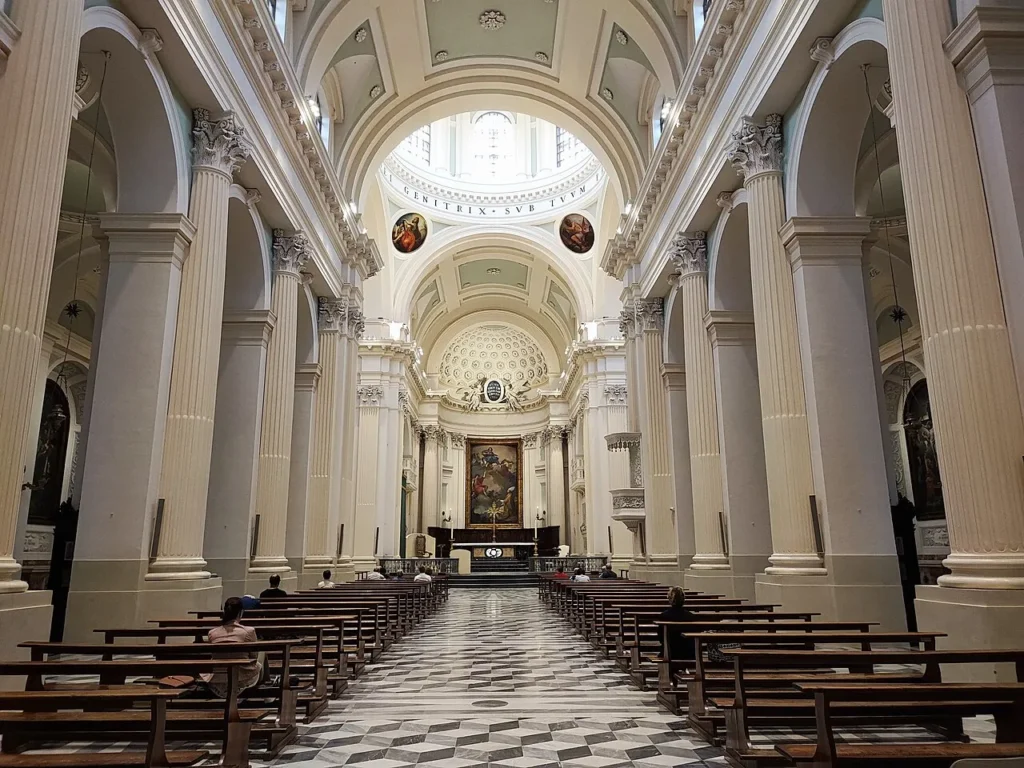
Architect: Giuseppe Valadier
Architectural style: Neoclassical architecture
External Architecture
The facade of the Urbino Cathedral is constructed using Furlo stone, giving it a distinct and elegant appearance. The facade is adorned with five statues that represent the Theological Virtues—Faith, Hope, and Charity—placed on the pediment. On either side of the slopes of the pediment, there are additional statues of Saint Augustine (on the left) and Saint John Chrysostom (on the right). The pillars supporting the facade culminate in composite-style capitals, enhancing the classical aesthetic. A prominent feature of the frieze, just below the pediment, is the inscription “STUDIORUM UNIVERSITATI FASTIGIUM”, which expresses gratitude towards the University of Urbino for its financial contribution to building the roof. In front of the cathedral, the steps leading to the entrance were arranged in their present form in 1859 by Archbishop Alessandro Angeloni. At the end of the elegant balustrade, statues of the Patron Saint Crescentino are placed to the left, and the Co-Patron Blessed Mainardo, the Bishop of Urbino, is placed to the right.
Interior Architecture
The interior of the cathedral is a stunning example of Neoclassical style, designed by Giuseppe Valadier. The building follows a Latin cross floorplan, with a central nave flanked by two side aisles, all covered with a barrel-vaulted ceiling. At the transept crossing, the cathedral is crowned by a majestic coffered dome, creating an impressive focal point in the interior. Stucco works adorn the interior, with Antonio Trentanove creating the statues of angels in the upper parts of the nave and Francesco Antonio Rondelli contributing to the design of the rose windows, capitals, and the statues of angels on the left altar of the transept.
Artworks in the Urbino Cathedral
The Urbino Cathedral houses several notable artworks, showcasing the talent of renowned artists. Federico Barocci’s works include a striking Saint Sebastian in the north aisle and a Last Supper in the Chapel of the Holy Sacrament. Carlo Maratta contributed a magnificent Assumption of the Virgin, created around 1707. Another significant piece is Carlo Cignani’s Nativity, completed in 1708. The pendentives of the dome feature representations of the Four Evangelists from the 18th century, believed to be works by Domenico Corvi (St. Matthew), Giuseppe Cades (St. Mark), Antonio Cavallucci (St. John), and Pietro Tedeschi (St. Luke). The main altarpiece, painted by Christopher Unterberger, beautifully depicts the Madonna surrounded by the patron saints of the city, adding to the spiritual and artistic richness of the cathedral.
Tomb of Polydore Vergil
The renowned humanist scholar and historian Polydore Vergil, who passed away in 1555, was buried in the cathedral in the Chapel of St. Andrew, which he had personally endowed. In 1613, a memorial stone was commissioned to mark his tomb, with the inscription declaring that Vergil’s fame would “live forever in the world.” However, this memorial stone is believed to have been lost in the 1789 earthquake.
Artworks in the Right and Left Aisles
The Right Aisle of the cathedral features several altars with important artworks. The first altar houses a gilded wooden statue from the 17th century depicting Saint Peter in the Chair, a replica of the original in the Vatican Basilica. The second altar contains an altarpiece by Claudio Ridolfi, illustrating the Translation of the Holy House of Loreto with Saint Andrew, from the 1630s. The third altar is home to The Martyrdom of Saint Sebastian (1558) by Federico Barocci, a work that was stolen in 1982, recovered in 2017, and subsequently restored. The fourth altar showcases Saint Cecilia in Ecstasy, painted by Federico Barocci between 1556 and 1561, one of his early masterpieces influenced by Raphael’s style. Lastly, the fifth altar features an altarpiece by Ludovico Viviani, depicting Christ Crucified between Saints James the Greater and Martin from the early 17th century.
The Left Aisle also contains several notable altars and works. The first altar holds the Baptismal Font, adorned with an 18th-century stucco sculptural group by Antonio Trentanove, which portrays the Baptism of Christ. The second altar presents The Visitation of Mary, a late 16th-century work by Antonio Viviani, inspired by a Baroque original in Rome. The third altar contains The Emperor Heraclius Carries the Cross (1619) by Iacopo Palma the Younger, commissioned by a local confraternity. The fourth altar features an altarpiece by Claudio Ridolfi, depicting Saint Charles Borromeo kneeling before the Virgin and Child (1630s). Finally, the fifth altar houses The Annunciation (1550) by Raffaello Motta da Reggio.
Transept Artworks
The transept of the cathedral features two important altars. On the right altar, a processional statue of Saint Crescentino, crafted from papier-mâché by Francesco Antonio Rondelli in the early 19th century, is displayed exclusively on the patron saint’s feast day, June 1. The rest of the year, the statue is covered by a canvas by Ludovico Viviani, depicting the Madonna with Child and Saints Jerome, Eusebius, and Clare. The left altar, dedicated to the Madonna della Misericordia, holds a canvas by Pompeo Batoni, portraying the Virgin with Child, supported by two angels created by Rondelli. Flanking the altar are two statues: one of Pope Clement XI (1710) by Francesco Moratti and the other of Raphael (1847) by Carlo Finelli.
Clock and Organ
The clock, located on the right side of the transept near the organ and bell tower, features four hands that display the minutes, seconds, hours, days of the month, and days of the week. Positioned above the chapel entrances in the transept, the current organ was installed in 1979 by the Girotto Company. This modern organ incorporates sound materials from earlier instruments by Gaetano Callido (1801) and Luigi Giudici (1892), preserving the cathedral’s musical legacy.
Dome, Presbytery and High Altar
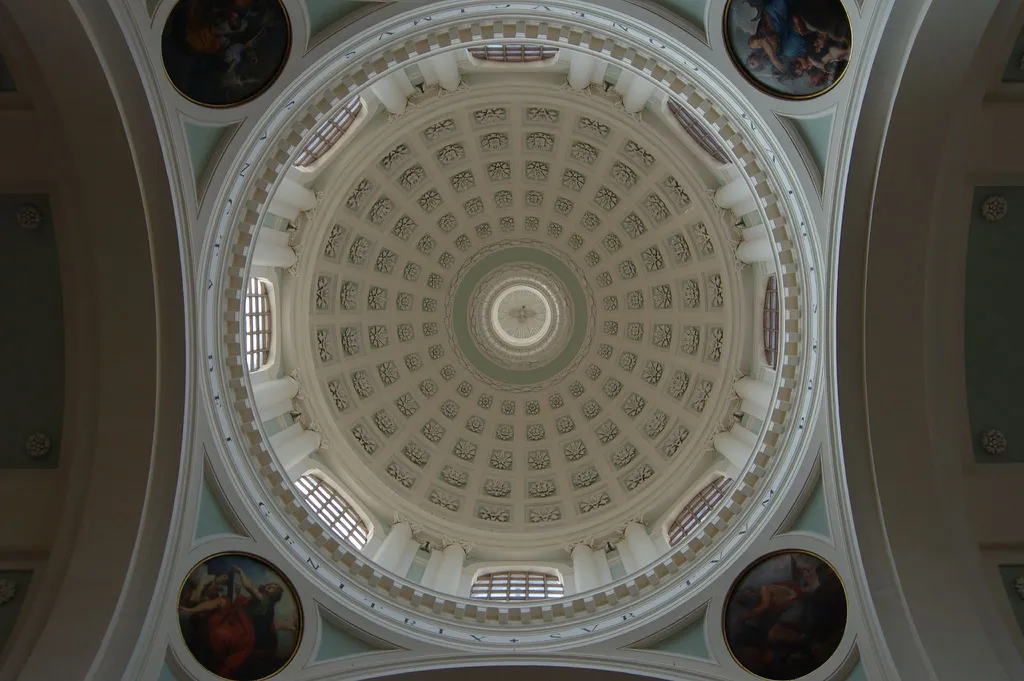
The dome is adorned with roundels depicting the Four Evangelists. These works, painted by artists of the Roman school in the late 18th century, include St. Matthew by Domenico Corvi, St. Mark by Giuseppe Cades, St. John by Antonio Cavallucci, and St. Luke by Pietro Tedeschi. The stucco rosettes on the dome are also the work of Rondelli.
In the presbytery, there is an altarpiece in the apse by Cristoforo Unterperger, depicting the Madonna Assumed into Heaven with Saint Crescentino and Blessed Mainardo (1794). Beneath the altarpiece is a 19th-century wooden choir by Vincenzo Nini. The high altar, designed by Francesco Fontana, is made of polychrome marble with gilded bronze bas-reliefs by Lorenzo Ottoni. This altar, which houses the relics of Saint Crescentino, was a gift from Pope Clement XI. On the side walls, there are two monuments dedicated to Pope Pius VI (right) and Pope Clement XI (left), created by Giuseppe Pisani. These commemorate their contributions to the cathedral’s restoration.
Chapel of the Blessed Sacrament
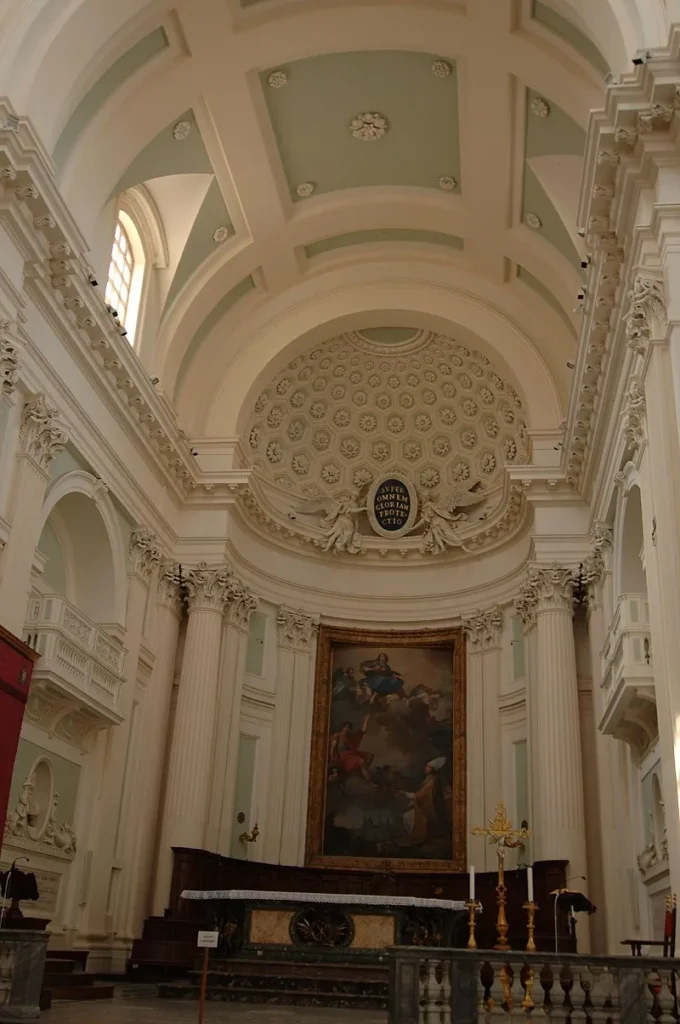
The Chapel of the Blessed Sacrament, located to the left of the presbytery, along with its twin chapel, is the last remaining evidence of the previous Renaissance cathedral. Its decoration was more elaborate than that of the rest of the Martinian church. Built at the beginning of the 16th century, the chapel was entrusted to a Confraternity established specifically for it, under the patronage of the Duke, who had internal access to the chapel from the Ducal Palace. This patronage led to the establishment of a Musical Chapel in 1507 by Duke Guidobaldo I da Montefeltro.
Although the original decorative elements from the first period, including works by Girolamo Genga, Timoteo Viti, and Evangelista di Piandimeleto, are lost, an elegant wrought iron gate commissioned from Giampaolo di Stefano Tintinna in 1511 remains as part of the original design. The current decoration of the chapel began in the late 16th century, with a barrel vault adorned with gilded stucco work by Fabio Viviani and Marcello Sparzio between 1588 and 1590. The stucco features curvilinear and rectangular motifs, fruit garlands, and vegetal frames. Small canvases depicting the Miracles of the Eucharist, painted by Antonio Viviani between 1595 and 1600, are interspersed within the stucco frames, replacing the original frescoes that had been planned. Some of these canvases were later replaced due to damage from humidity, including a Saint Jerome and an Angel painted by Giovan Battista Urbinelli in 1650, and a Saint Thomas Aquinas by Giuseppe Chiari in 1726.
On the side walls, two large canvases stand out: on the left, Federico Barocci’s masterpiece, The Last Supper, painted between 1590 and 1599. Originally intended to be paired with a Fall of Manna by Barocci, this commission was given to Alessandro Vitali after Barocci declined due to the workload and insufficient compensation. Vitali completed the work in 1607, but it too was damaged by humidity and replaced in 1829 by The Adoration of the Magi by Giovan Battista Urbinelli. On either side of these large canvases, four stucco statues representing biblical figures—King Solomon, Elijah, David, and Melchizedek—were sculpted by Marcello Sparzio in 1590. The marble altar in the chapel, designed by Alessandro Specchi, was completed in the early 18th century.
Chapel of the Conception
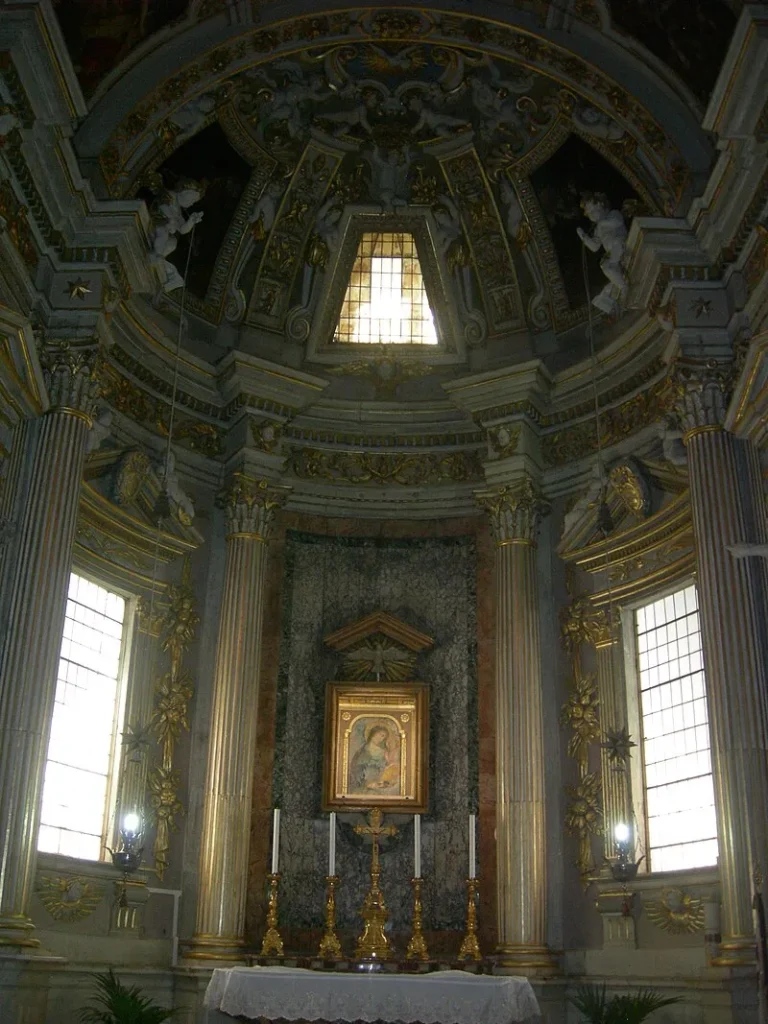
Situated to the right of the presbytery, the Chapel of the Conception mirrors the Chapel of the Blessed Sacrament and is under the patronage of the city community. Built around the early 16th century at the behest of Minorite preacher Giovanni de Pili, it began receiving its decorative elements in the mid-17th century, guided by Bishop Ascanio Maffei and based on designs by Tranquillo Vincenzi. The chapel’s gilded stucco decoration mirrors that of its counterpart and was completed in the 1650s by Alessio Pellegrini, who also created the statues of Saint Zaccaria, Jesse, Saint Joseph, and Abraham. The ceiling of the chapel was painted in 1660 by Giovan Battista Urbinelli with scenes of the Coronation of the Virgin flanked by the Announcing Angel and the Annunciate Virgin. Later, in 1678, four Sibyls and five episodes from the Virgin’s life were added, works by Gian Ortensio Bertuzzi and Alfonso Patanazzi.
The stucco work in this chapel was completed by French artist Luigi Georges, who crafted the decorative borders under the statues, floral cascades near the altar, and a commemorative plaque dated 1665, which marks the Virgin’s intercession during the 1630 plague. In the apse of the chapel, a 14th or early 15th-century fresco depicting a Madonna with Child, attributed to the Master of the Coronation of Bellpuig, is displayed. This work was transferred from the earlier medieval cathedral and was considered miraculous. Beneath the altar are the relics of Blessed Mainardo, preserved in an 18th-century structure designed by Alessandro Specchi. On the side walls of the chapel, two large canvases, gifts from Pope Clement XI, hang: The Nativity of the Virgin by Carlo Cignani, signed and dated 1709, and The Assumption of the Virgin by Carlo Maratta, signed and dated around 1707.
Feast Day
Feast Day : 15 August
The feast day of the Cathedral Basilica of the Assumption of Mary in Urbino, Italy, is celebrated on August 15th. This date marks the Feast of the Assumption of the Blessed Virgin Mary, a major Catholic celebration honoring the belief that Mary was taken up body and soul into heaven.
Church Mass Timing
Monday : 6:00 PM , 6:30 PM
Tuesday : 6:00 PM , 6:30 PM
Wednesday : 6:00 PM , 6:30 PM
Thursday : 6:00 PM , 6:30 PM
Friday : 6:00 PM , 6:30 PM
Saturday : 6:00 PM , 6:30 PM
Sunday : 10:00 AM , 6:30 PM
Church Opening Time:
Monday : 9:00 am – 06:30 pm.
Tuesday : 9:00 am – 06:30 pm.
Wednesday : 9:00 am – 06:30 pm.
Thursday : 9:00 am – 06:30 pm.
Friday : 9:00 am – 06:30 pm.
Saturday : 9:00 am – 06:30 pm.
Sunday : 9:00 am – 06:30 pm.
Contact Info
Address :
Via Puccinotti, 29, 61029 Urbino PU, Italy.
Phone : +39 0722 322529
Accommodations
Connectivities
Airway
Cathedral Basilica of the Assumption of Mary Urbino, Italy, to Aeroporto di Fano “Enzo e Walter Omiccioli”, Viale Enrico Mattei, distance between 42 min (45.6 km) via SS73bis.
Railway
Cathedral Basilica of the Assumption of Mary Urbino, Italy, to Urbino Railway Station, distance between 4 min (1.1 km) via Via Aurelio Saffi and Via Giacomo Matteotti.

